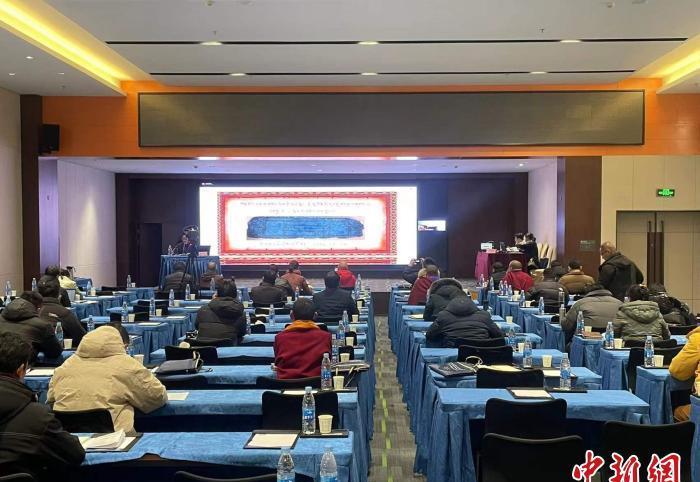
The scene of the 2nd China Tibet Ali Lhasa Zhang-Zhung Cultural Academic Seminar. Photo by Ran Wenjuan
Lhasa, 18 Jan (Xinhua) -- The three-day Second China Tibet Ali Lhasa Zhangxiong Cultural Symposium is being held in Lhasa, and 60 experts and scholars from Tibet, Beijing, Sichuan, Gansu, Yunnan and other domestic universities and all walks of life engaged in Zhangxiong cultural research gathered together for academic exchanges.
Zhangxiong culture is a civilization created by the ancient ancestors of the Tibetan nation, the root of the origin of the Tibetan nation, and one of the ancient origins of the Chinese national culture. In the report of the conference, Dhonju Raj, a researcher of the Tibet Academy of Social Sciences, made a report on the "Analysis of the Ruins of the Bon Zhilong Monastery in Lhasa", Xia Gewangdui, a researcher at the Institute of Cultural Relics Protection of the Tibet Autonomous Region, introduced the archaeological excavations in 2017-2020 in Gebu Sairu, Alizada County, and Mu Shihua, a researcher of the Chinese Academy of Social Sciences, made a report on the "New Theory on the Genetic Genealogy Status of the Zhangxiong Language".
During the conference, a number of experts and scholars conducted academic discussions and exchanges from the aspects of history and archaeology, the "Belt and Road" and cultural exchanges, ancient books and documents, folk culture, astronomical almanacs, language and art. Among them, many participants focused on the role of Zhang-zhung culture in forging a solid sense of the Chinese national community and the exchanges, exchanges and integration of Zhang-zhung culture among multiple ethnic groups in China.
For example, Song Fang, a lecturer at Chengdu Normal University, through his study of the GouXiang Temple, the earliest and most famous Bon monastery in the Bailongjiang River Basin, and its "Duoshun Festival", believes that the lion dance in the "Duoshun Festival", the detailed interpretation of the Spring Cow Calendar and other ceremonies and related scriptures in the Nine Palaces, Bagua, Five Elements, and Zodiac Signs are all influenced by Han culture; its rich cultural connotation shows the historical process of contact, interaction and mutual reference between Han and Tibetan cultures. (End)